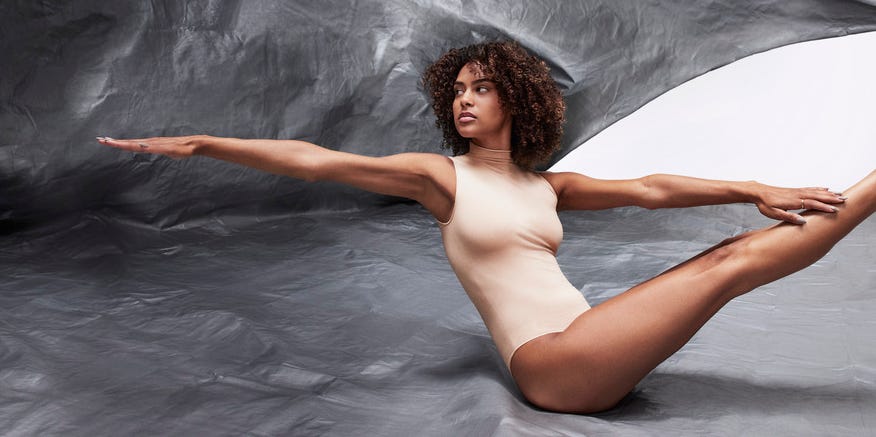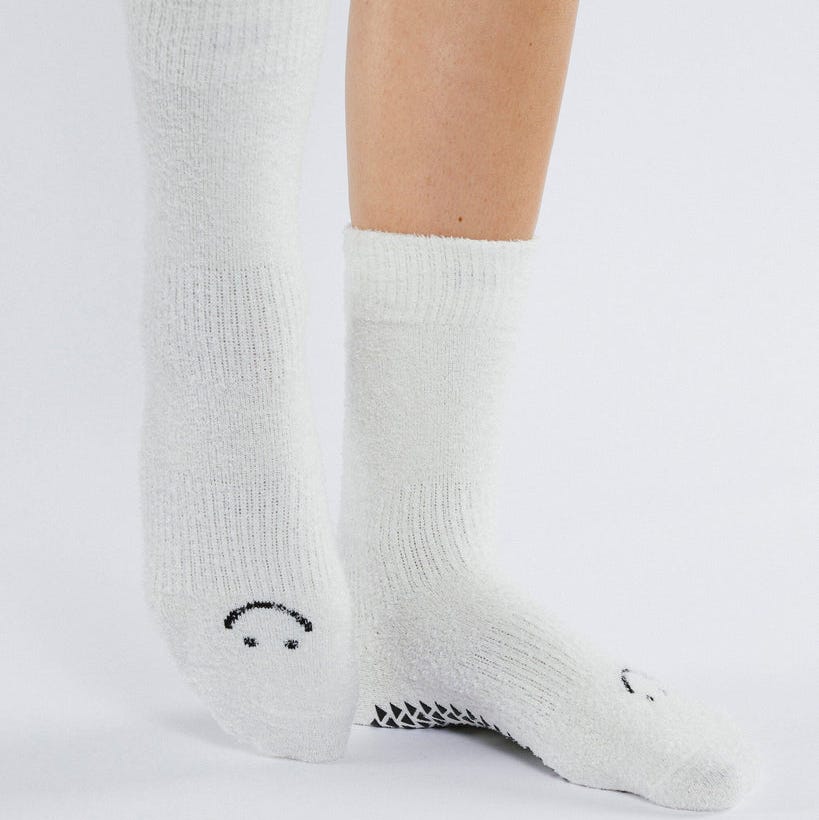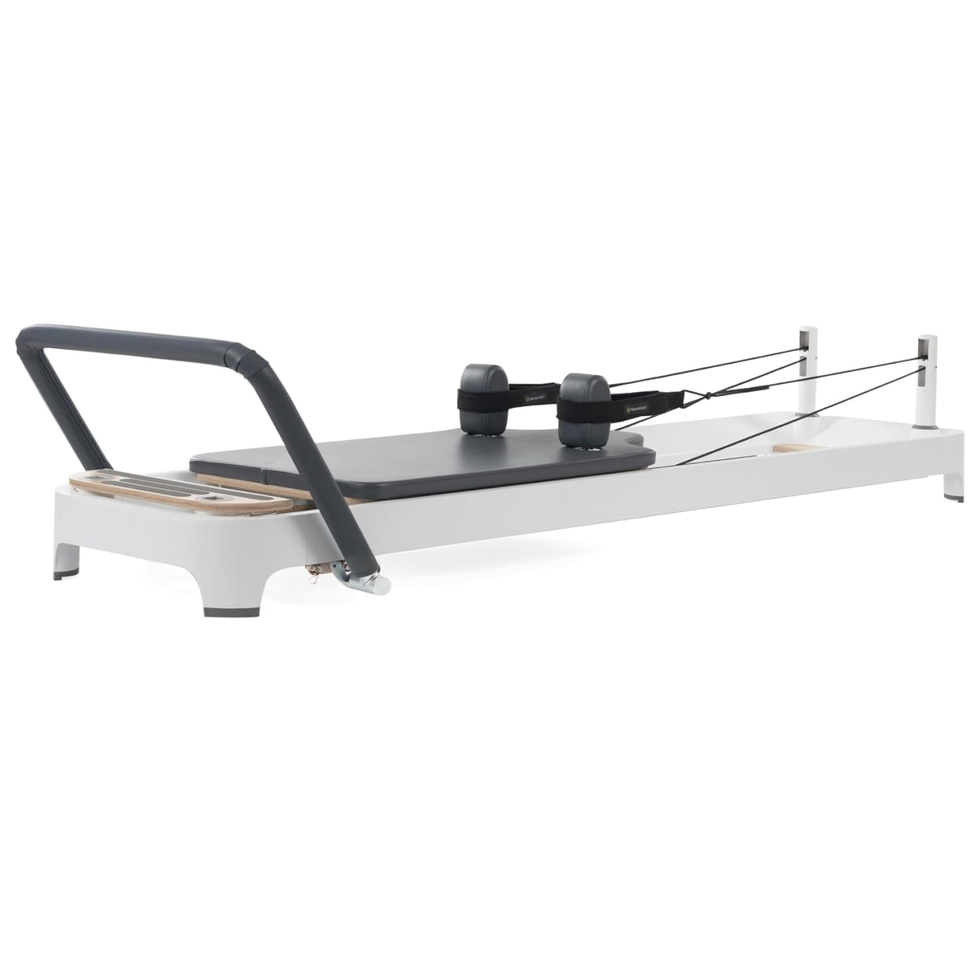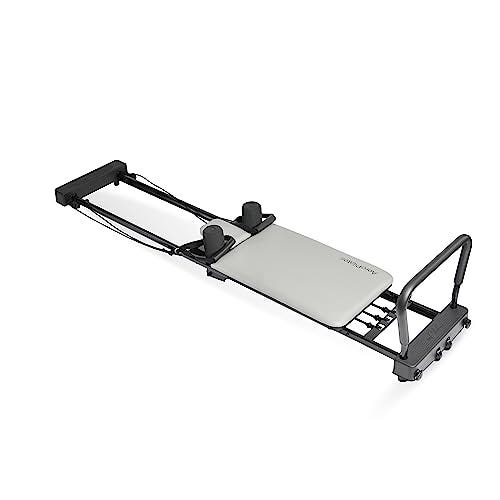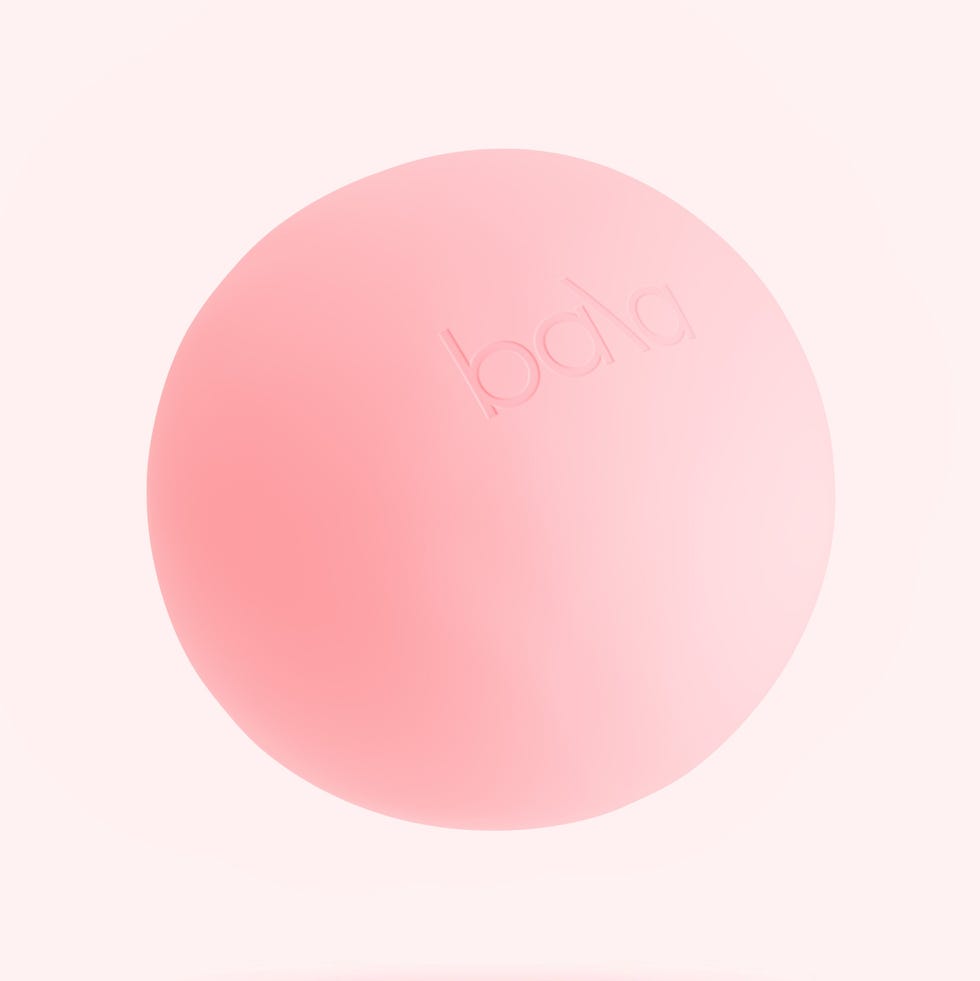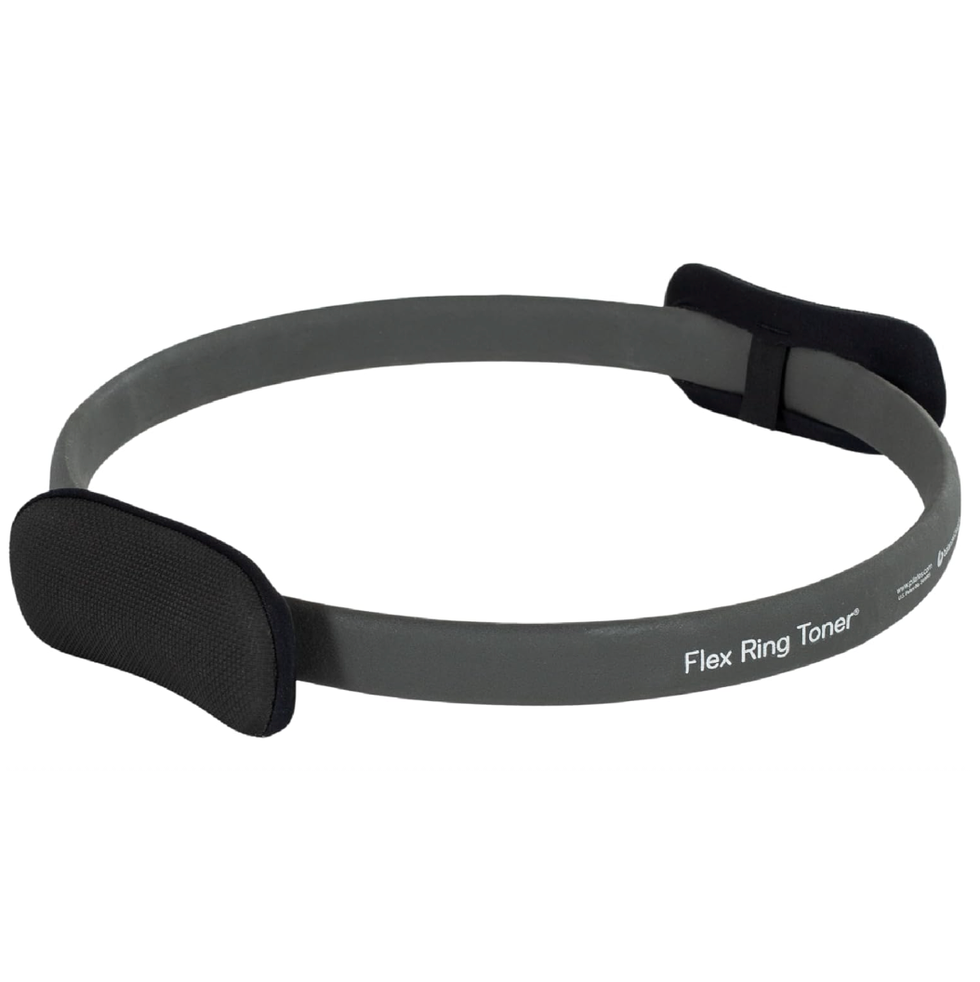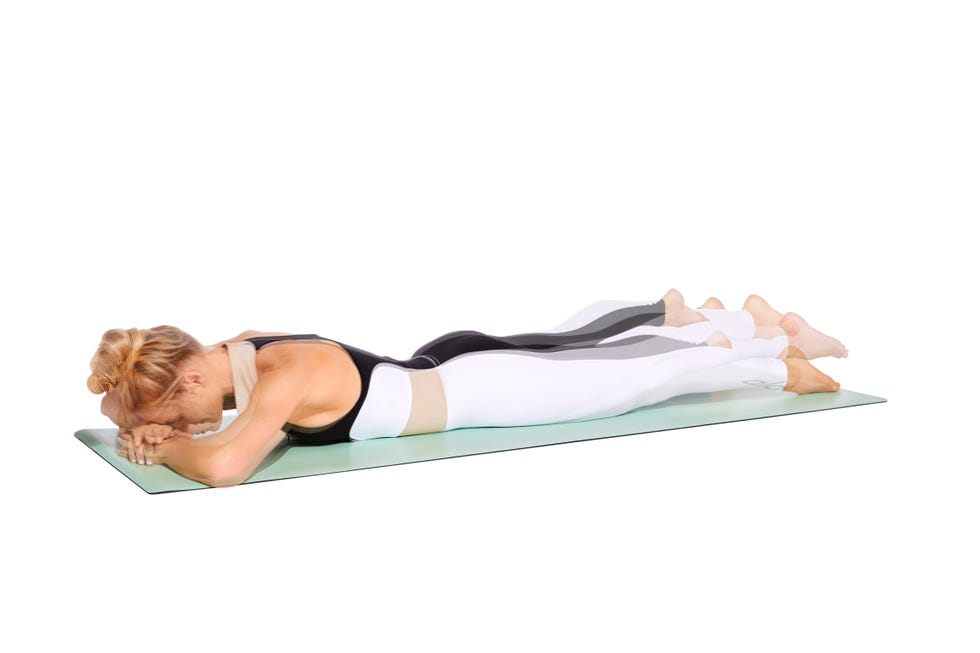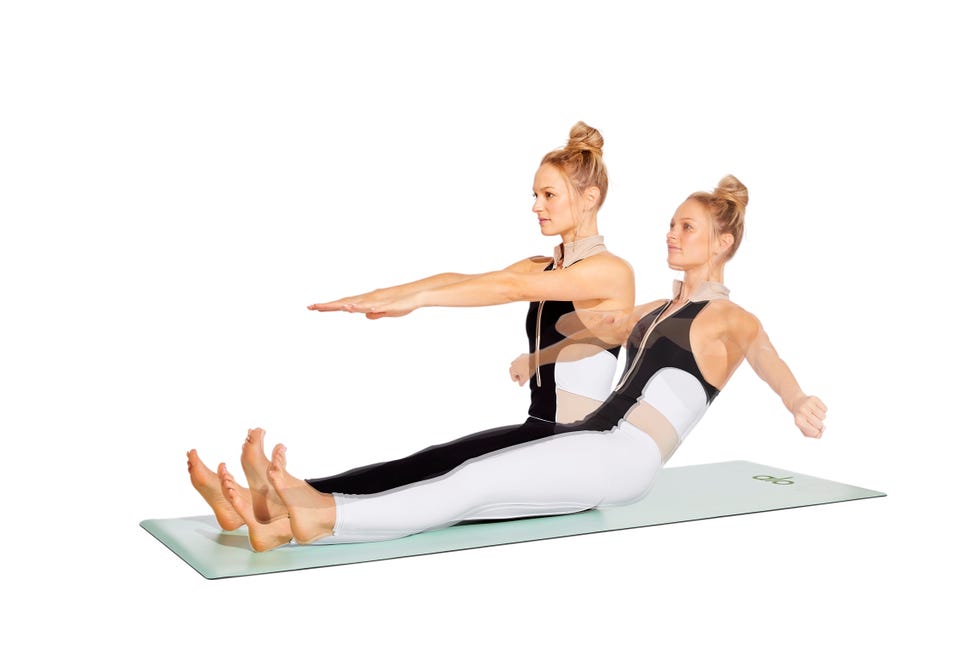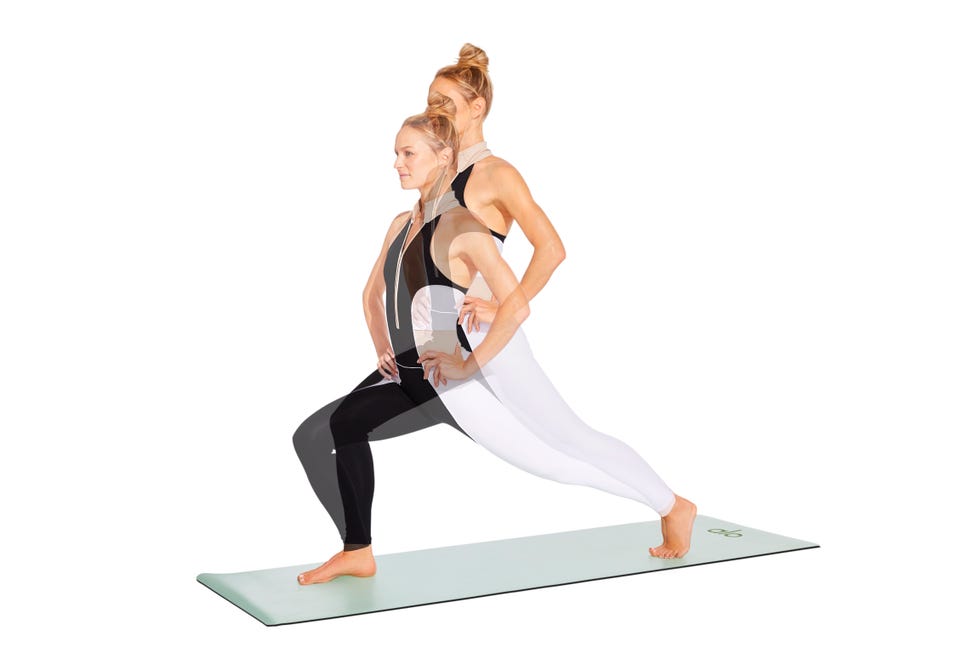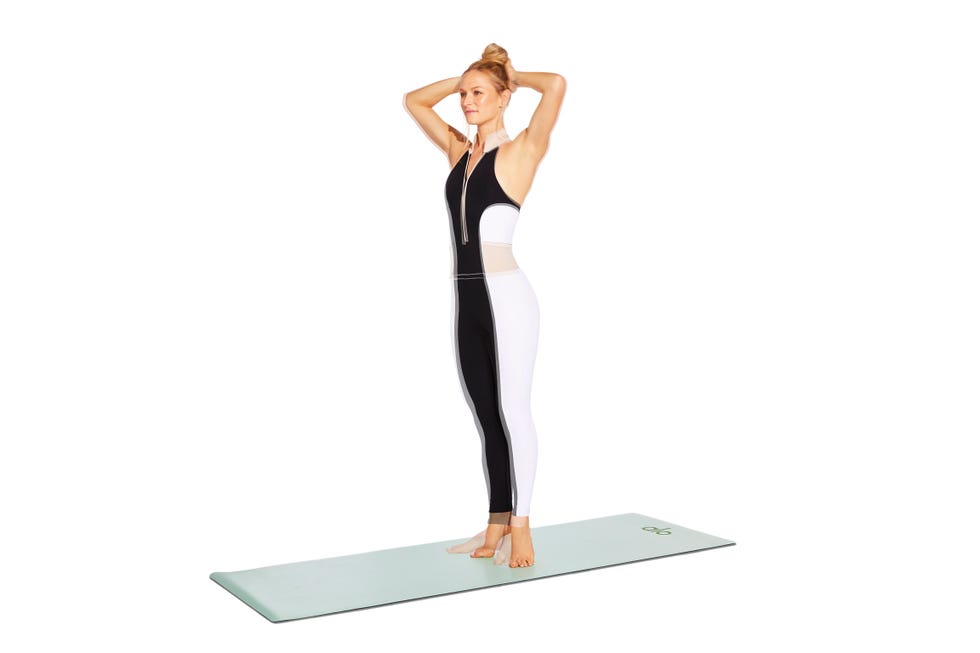The year is 1995, and I’m popping one of my mom’s Jane Fonda step aerobics tapes into the VCR, ready to sweat along with a cast of perky hard bodies. This is me, at 13 years old, discovering how truly fantastic it feels to move my body the way I choose. Until recently, I had missed that upbeat girl and her endorphin-forward attitude. Then I reconnected with her on the Pilates reformer.
Over the past two decades, I’d replaced workouts that brought me joy with a “no pain, no gain” approach. Running became one of my go-tos—not because I liked it, but because I told myself I had to do it to stay fit. But by my mid-30s I was feeling tired (sore knees…tight back). There has to be a better way, I thought.
That’s when I slipped off my sneakers in favor of low-impact, barefoot bliss. I’m far from the only one obsessed with Pilates—loyal WH readers have likely noticed that so many of the celebs we interview have sung the praises of the modality. But it’s not some inaccessible celeb trend, say pros. “Fitness fads come and go, but Pilates has stood the test of time,” says Carrie Campbell, who owns and teaches at Positively Pilates LLC in Hoboken, New Jersey. While some people use Pilates as their one-and-only way to work out, others use it as cross training with other fitness.
After five years of practice now (and a certification!), my body feels better. My back stiffness has largely disappeared—a development supported by research. The method has been shown to reduce chronic low back pain, according to a recent review in Postgraduate Medical Journal. The upsides don’t stop there: The brain gets in on the feel-good action, too, with Pilates reducing depression and anxiety symptoms, per a meta-analysis in Complementary Therapies in Medicine.
Meet the experts: Carrie Campbell is a Pilates instructor who owns and teaches at Positively Pilates LLC in Hoboken, New Jersey. Blossom Leilani Crawford is the owner and director of Bridge Pilates in Brooklyn, New York.
I’m not here to tell you to quit your fave HIIT class or to stop frequenting the track if you love it. But Pilates can be a nice counterbalance to all that pushing, pulling, and pounding. One study even found that Pilates done in a clinical setting improved functional movement in recreational runners, which could lead to fewer injuries, per the International Journal of Sports Medicine.
So…are you ready to hit the mat (or reformer) for your first teaser? Whether you opt for an in-home sweat sesh or an in-studio hour, we’ve got your guide to getting into the Pilates groove.
Editor-Loved Pilates Gear
Reformer On The Mat Workout
Undo the work crunchies (stiff shoulders, tight hips) with an extension-based flow by pro Blossom Leilani Crawford.
Foot Work
How to:
- Lie faceup with head gently pressing into floor, arms by sides, legs up and bent into a diamond shape with feet flexed, heels together, toes apart (A).
- Extend legs out at an angle that challenges the core but not the back. Point toes (B).
- Slightly flex toes (pretend you’re grabbing a pencil) as you frog your legs in (C). That’s 1 rep; do 10.
Prone Hundred
How to:
- Lie facedown with hands under forehead, legs straight (A).
- Lift upper and lower body into a hover with equal weight between ribs and pelvis (B).
- Breathe in on 5 counts and out on 5 counts, clapping feet on each count (C). That’s 1 rep. Do 10 to reach your “hundred.”
Pulling Straps
How to:
- Lie facedown with arms framing face (A).
- Lift upper body up (keeping rib cage down) and sweep arms out and down until palms reach hips (B).
- Circle arms back up, lengthening through the neck as you lower body to floor. That’s 1 rep. Do 3 to 8.
Rowing
How to:
- Sit with legs long and arms reaching forward.
- Pull fists into chest while rounding back, keeping abs engaged.
- Maintain position and open arms to side, then bend arms back in. Do 3 to 8 reps.
Corkscrew
How to:
- Lie faceup with arms by sides and legs together at a 12 o’clock position.
- Circle legs around an imaginary clockface and return to 12.
- On next rep, circle in opposite direction. That’s one set. Do three sets.
Lunge Stretch
How to:
- Start with right foot forward, knee bent, and left leg back, heel lifted.
- Bend and straighten right leg a few times to stretch left hip and quad. Switch sides.
Balance
How to:
- Stand tall with heels together, toes apart; hands behind head.
- Rise onto toes, drawing thighs toward each other, then lower heels. That’s 1 rep. Do 8 to 10.
What is a Pilates reformer, exactly?
Perhaps you’ve glimpsed that apparatus with all the springs and pulleys looming in a studio. Or you’ve gawked as an impossibly graceful TikToker practically catapults off the thing. Either way, the reformer can be intimidating.
Joseph Pilates himself invented this machine. A German gymnast, boxer, and sometime circus performer (seriously!), Pilates was interned in England during World War I, where he began training fellow internees in the system he was perfecting (at the time called “Contrology”). With many pupils injured or even bed-bound, Pilates got creative and rigged springs to bed frames, allowing for accessible resistance training and, in the process, paving the way for the reformer.
Today, the apparatus is composed of a moving bed (a.k.a. carriage) that works with and against spring tension. There are a ton of pros to taking your Pilates work to a reformer. For one, it was designed with proper alignment in mind. “There are blocks to keep your shoulders from shrugging up to your ears. When your feet are on the foot bar, it sets your pelvis into neutral,” Campbell says. For another, the spring system creates concentric and eccentric work (which you don’t always get from simple weights).
At this point you’re probably wondering: Is the reformer harder than the mat? The answer is yes…and no. While the springs generate greater tension for you to work against, they also support your body against the pull of gravity.
Feeling ready for your first class? Great! Be sure to wear form-fitting clothes so your instructor can see your alignment (and so you don’t get your favorite baggy concert tee stuck in a spring). Last but not least? Don’t take yourself too seriously…and have fun.
Amy Wilkinson is a contributing entertainment editor at Women’s Health, where she edits the magazine’s celebrity cover stories and writes health features. She has previously held editor titles at Entertainment Weekly and MTV News. In 2021, Amy completed her 600-hour teacher-training at Core Pilates NYC to become a comprehensively trained Pilates instructor.
Read the full article here


